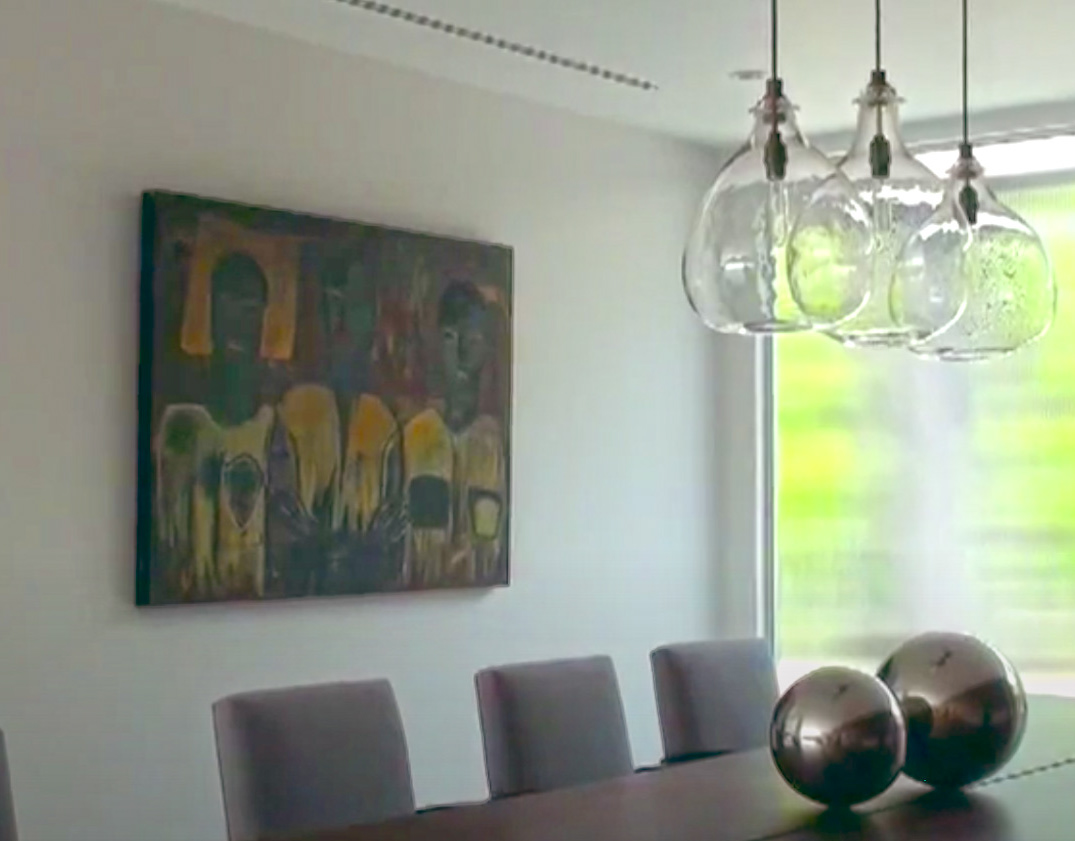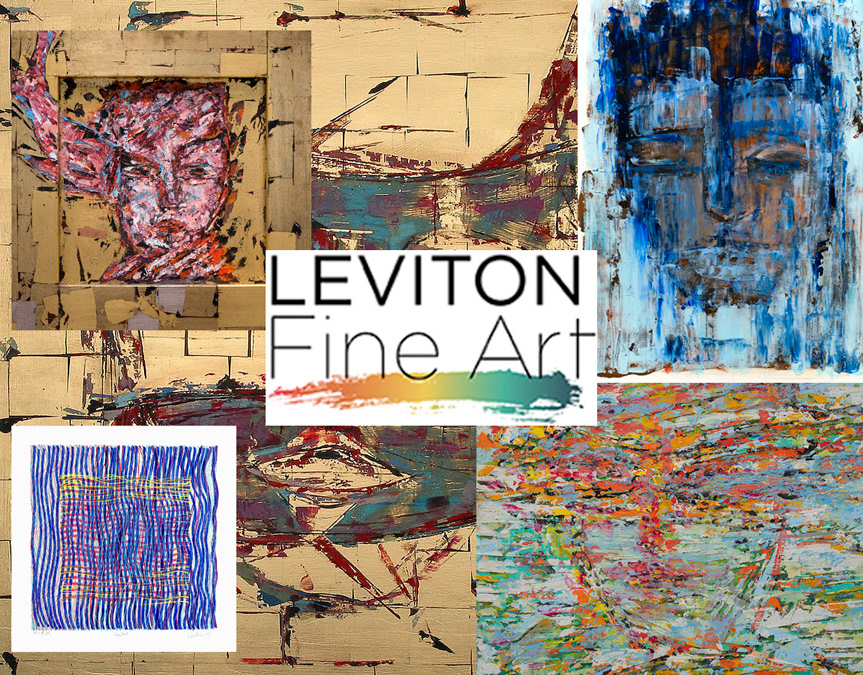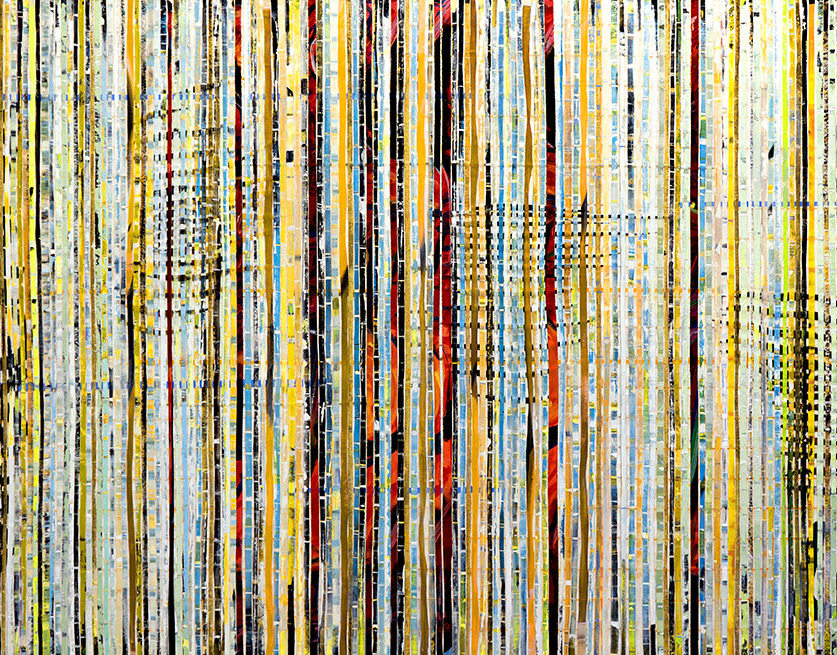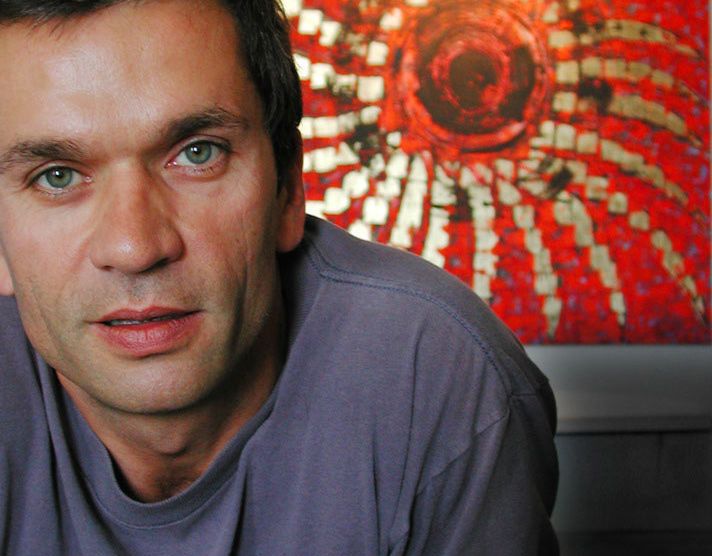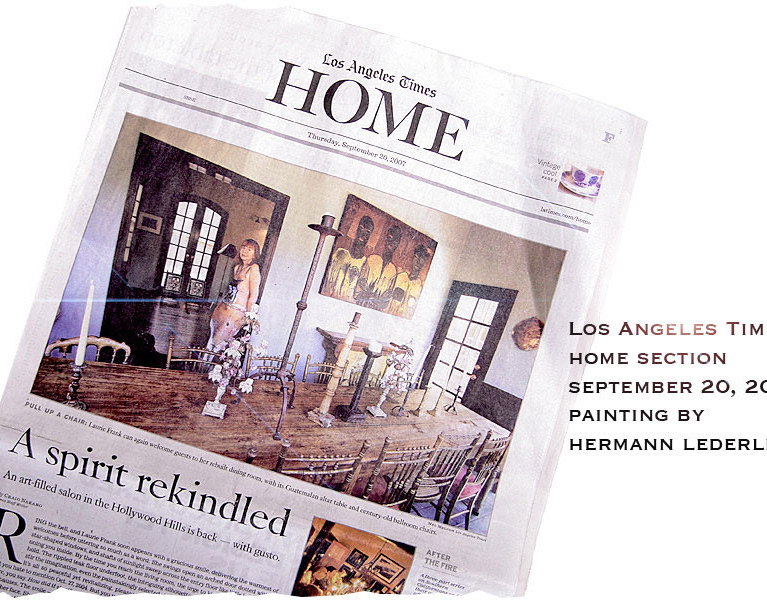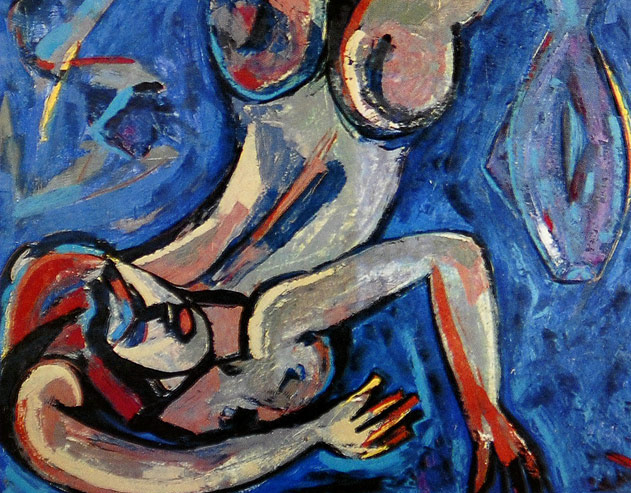“What interests me is not just the complete picture, but a minute detail or a particular interaction which has to do with how an individual sees the world. Knowing what happened in the past and then projecting the future, you suspend yourself in that moment of time”.
Hermann Lederle’s work is not easy to categorize. Encompassing a variety of media, styles and scales, it somehow manages to maintain an ineffable balance. The influence of Clemente can be felt in some of the earlier expressionist works and recent works on paper, while the “Pixel” series suggests a kind of Cubism for the digital age.
His work as a filmmaker cross-pollinates in subtle, oblique ways. The idea of pixel paintings came to him when working with digital images. “It was a discovery. We may have been seeing this way unconsciously since human beings had eyes, but now that we know we can zoom in on something, and then zoom out and see the whole picture, it becomes an awareness we can use to appreciate the pixilated version. Kind of like a primal, pre-conscious experience that relates to the era of technology.”
Some of the larger canvases have a vital, explosive energy -- the large pixels radiating outward rhythmically, like a waltz, suggest a reserved spontaneity. At the center there is calm, control, and powerful emotion. They can be puzzle-like, with a trompe-l’oeuil quality. Figures or shapes disguised within the painting are not at first apparent, but once seen cannot be unseen. Figures float to the surface and then sink back.
WALTZ, OIL ON CANVAS, 50 BY 68 INCHES, 2002
The process for his works on canvas involves a series of intricate layers, often using gold leaf, and oil paint incorporated with wax. There are, what he calls, three layer states: the conceptual starting point, the emotional, and then the unifying stage. The wax medium renders the paint transparent, allowing him to paint layer upon layer.
It starts with a concept, perhaps ten canvases on each of which he paints a face. Lederle might have a gold background in mind, or a pixel pattern. They become the studies for a series. Then he goes back and looks at each one closely, waiting for something to speak to him, maybe a line or a nascent emotion. He singles out one and applies an emotional state onto it. At this point, unconcerned with technique, he works quickly and instinctively, superimposing a “snapshot” of what the painting will become. In this way each work is endowed with its unique purpose. It is at this stage that the titles come to him. “The title of a painting creates a bridge to the audience, a portal out into the world.”
Then comes the third phase, a return to technique, when the painting is unified stylistically. Lederle adjusts paint quality, line, and color. The emotion is ultimately painted over. The final effect is harmonious because of the initial grid-like foundation, which provides a balanced substructure.
His image system includes fish, birds, and human faces. “What I like about the fish is that you have an oval, almost like a lip or an eye, and you repeat it, to create a figure, or you can leave it as a fish. I use it as a building block.” He likes to express body language through the upper torso. “When you observe how people fold their hands or arms, or how close they keep them to their body, it tells you a lot about their mood, expression, what they’re trying to be.”
Although his earliest use of gold leaf was in a series of small paintings he called “Icons”, one does not get a sense of reverence from his use of the precious metal. In fact, it doesn’t feel “precious.” The gold is treated democratically, with the same value as any other color in the palate.
The effect of the oil paint on gold is, however, dramatic. The painting shifts and transforms depending on the direction of the light in the environment. Indirect light brings the gold to the foreground and the painted imagery becomes silhouetted as if backlit, while in direct light the gold recedes, and the details of the figure emerge with more prominence, as if the light is inverting the painting as a whole. Similar to pentimento where a painting has been painted over, the light plays upon the surface revealing, in subtle shifts, what lies beneath.
Nor are the figures depicted necessarily heroic, but they often have a self-contained grace, an innate contentment with the state in which they find themselves. “To me, when you’re happy with your way of being, you’ve fulfilled the purpose of life. Real heroism is not something one applies externally.” For instance, in the painting “Clone” the figure may at first appear trapped within a circle, yet upon further contemplation, there is a lack of tension in the way the figure holds its arms and head which suggests ease, and an almost yoga-like tranquility.
Lederle often hides small figures, sometimes even miniature self-portraits, within the larger works. It provides a history, a timeline. He builds the painting up, from the very first stroke to the very last, while leaving behind evidence of each previous stage so that it is possible to see how the painting has evolved. Each painting encompasses a span of time, intimating a gradual unfolding, the antithesis of a photograph which captures an instant. For example, the painting entitled “Voyage” has two oval shapes connected in the center, a sort of polygon. “If those two shapes traveled to meet, through the voyage and meeting, they completed their expression in a third embodiment.” Upon closer scrutiny, a face can be discovered within.
Lederle often hides small figures, sometimes even miniature self-portraits, within the larger works. It provides a history, a timeline. He builds the painting up, from the very first stroke to the very last, while leaving behind evidence of each previous stage so that it is possible to see how the painting has evolved. Each painting encompasses a span of time, intimating a gradual unfolding, the antithesis of a photograph which captures an instant. For example, the painting entitled “Voyage” has two oval shapes connected in the center, a sort of polygon. “If those two shapes traveled to meet, through the voyage and meeting, they completed their expression in a third embodiment.” Upon closer scrutiny, a face can be discovered within.
“The later body of work may have become less revealing of my inner self, and perhaps it is a reflection of the world today. The technique has become central to the process and the final result. However I still like spontaneous and arbitrary expressions. One thinks of oneself as planning one’s future, yet it appears to me that it is very open ended, a reaction to influences rather than a premeditated structure.”
LOS ANGELES AUGUST 2000
